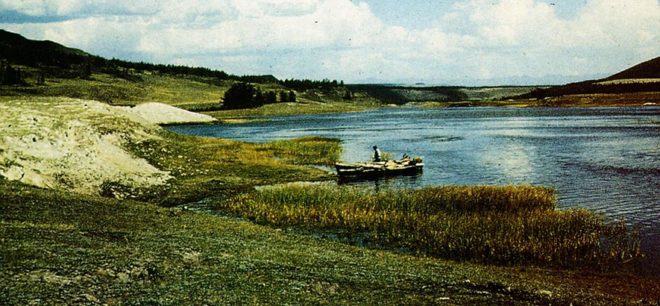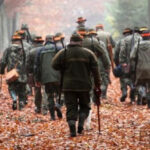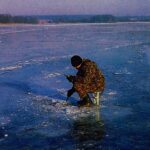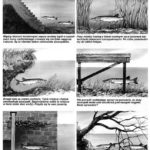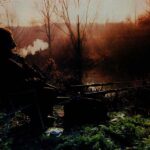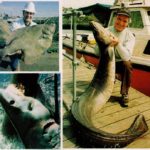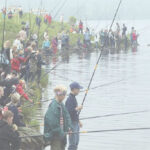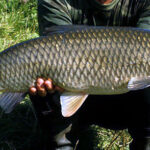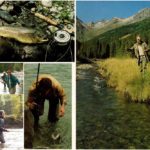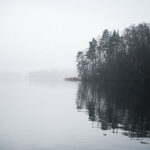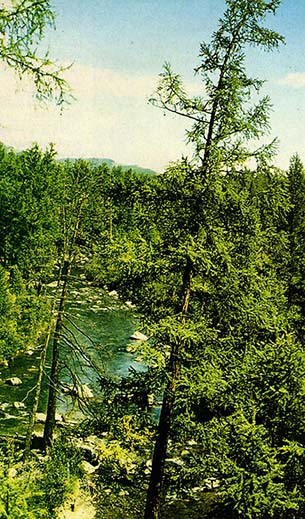 Mongolia kojarzy się zazwyczaj z pustynią Gobi i Dżyngis Chanem. Dla myśliwych i wędkarzy jest ona szczególną atrakcją. Przed laty były pewne trudności dla szerszej turystyki. Teraz to się zmieniło i Mongolia stała się modną nie tylko dla wędkarzy i myśliwych. Lecą tam ludzie chcący zobaczyć nieliczne miejsca na świecie, gdzie jest czyste środowisko i pełne piękno natury. Spotykają w tym kraju wielką gościnność. Bogaci wędkarze, którzy mają już „zaliczone” łowy na marlina czy barakudę i nie przerażają ich koszty, tym razem chcieliby spróbować wędkarskiego szczęścia przy połowie lenoka i przede wszystkim tajmienia, który tu dorasta do 50 kg. Np. za tygodniowe wędkowanie na jeziorze Hubsubguł (sto kilkadziesiąt kilometrów długości i głębokości dochodzącej do 265 m) oraz wypływającej z niego rzece Ejgin Goł – trzeba zapłacić 1050 dolarów. Niektórzy wędkarze lecą helikopterem w niedostępne okolice choćby na jeden dzień. Pierwszą podróż wędkarską do Mongolii odbyłem w 1977 roku, a ostatnia miała miejsce w lipcu i sierpniu tego roku. Łowiłem na większości rzek Mongolii, nad Ononem (miejsce urodzin Dżyngis Chana), Kerulenem, Orchonem (opisywanym przez Jerzego Putramenta), Murenem, Jeroo, Tengiz Gołem i przede wszystkim kilkakrotnie nad Jenisejem, zwanym w języku mongolskim Sziszhid Gołem. Rzeka ta spływa z gór, gdzie kilka szczytów osiąga wysokość powyżej 3000 m n.p.m. Płynie przez Kotlinę Darchacką, wpływając naprzód do jeziora Cagaan Nuur (Jezioro Białe). Aby się dostać do tego jeziora trzeba lecieć samolotem do ajmaku Habsubgułskiego – miasta Muren, a stąd naszym poczciwym i starym Antkiem do powiatowej miejscowości – Cagaan Nuur. Tu dawniej było gospodarstwo myśliwsko-rybackie. Stąd już łódka tego gospodarstwa – umożliwiała nam dotarcie do wideł rzeki Sziszhid Gołu i mniejszej rzeki – Tengiz Gołu. W tym miejscu – przy szpalerze modrzewi zakładaliśmy namioty. Stąd mieliśmy 50 metrów do Je-niseju i 250 m do Tengiz Gołu. Z naszego miejsca widzieliśmy po drugiej stronie górzystą tajgę koloru jasnozielonego oraz nieliczne ciemnozielone plamki, świadczące o obecności syberyjskich cedrów.
Mongolia kojarzy się zazwyczaj z pustynią Gobi i Dżyngis Chanem. Dla myśliwych i wędkarzy jest ona szczególną atrakcją. Przed laty były pewne trudności dla szerszej turystyki. Teraz to się zmieniło i Mongolia stała się modną nie tylko dla wędkarzy i myśliwych. Lecą tam ludzie chcący zobaczyć nieliczne miejsca na świecie, gdzie jest czyste środowisko i pełne piękno natury. Spotykają w tym kraju wielką gościnność. Bogaci wędkarze, którzy mają już „zaliczone” łowy na marlina czy barakudę i nie przerażają ich koszty, tym razem chcieliby spróbować wędkarskiego szczęścia przy połowie lenoka i przede wszystkim tajmienia, który tu dorasta do 50 kg. Np. za tygodniowe wędkowanie na jeziorze Hubsubguł (sto kilkadziesiąt kilometrów długości i głębokości dochodzącej do 265 m) oraz wypływającej z niego rzece Ejgin Goł – trzeba zapłacić 1050 dolarów. Niektórzy wędkarze lecą helikopterem w niedostępne okolice choćby na jeden dzień. Pierwszą podróż wędkarską do Mongolii odbyłem w 1977 roku, a ostatnia miała miejsce w lipcu i sierpniu tego roku. Łowiłem na większości rzek Mongolii, nad Ononem (miejsce urodzin Dżyngis Chana), Kerulenem, Orchonem (opisywanym przez Jerzego Putramenta), Murenem, Jeroo, Tengiz Gołem i przede wszystkim kilkakrotnie nad Jenisejem, zwanym w języku mongolskim Sziszhid Gołem. Rzeka ta spływa z gór, gdzie kilka szczytów osiąga wysokość powyżej 3000 m n.p.m. Płynie przez Kotlinę Darchacką, wpływając naprzód do jeziora Cagaan Nuur (Jezioro Białe). Aby się dostać do tego jeziora trzeba lecieć samolotem do ajmaku Habsubgułskiego – miasta Muren, a stąd naszym poczciwym i starym Antkiem do powiatowej miejscowości – Cagaan Nuur. Tu dawniej było gospodarstwo myśliwsko-rybackie. Stąd już łódka tego gospodarstwa – umożliwiała nam dotarcie do wideł rzeki Sziszhid Gołu i mniejszej rzeki – Tengiz Gołu. W tym miejscu – przy szpalerze modrzewi zakładaliśmy namioty. Stąd mieliśmy 50 metrów do Je-niseju i 250 m do Tengiz Gołu. Z naszego miejsca widzieliśmy po drugiej stronie górzystą tajgę koloru jasnozielonego oraz nieliczne ciemnozielone plamki, świadczące o obecności syberyjskich cedrów.
Z drugiej strony otaczał nas step i wzgórza, gdzie można było dostrzec – jakby wysoki „tort czekoladowy” – resztki warowni z czasów Dżyngis Chana. Na stepie sterczał dwumetrowy słup kamienny z wyraźnymi wcięciami. Podobno w tym miejscu Mongołowie przywiązywali swoje konie – podczas postoju – przed wyruszeniem na Zachód. Patrząc w kierunku rzeki – widać było wysokie góry, w wyższych partiach – pokryte śniegiem. Po drugiej stronie dużej rzeki można było dostrzec ujście małej rzeczki, gdzie łowiliśmy przede wszystkim bardzo duże lipienie i lenoki (Brachy-mistrax Lenok).
Sierpień ma zmienną aurę: raz – pierwszego sierpnia wichura śnieżna zawaliła nam namiot. Na taki urlop należy wziąć ciepłą odzież. A i alkohol się przyda. Butelka takiego płynu wystawiona koło namiotu – wygląda tak, jakby była wyjęta z zamrażalnika. Na co łowi się tu ryby? Na wszystko, co się kręci i pływa oraz na duże koniki polne. Używaliśmy Meppsów (głównie obrotówek) ale i nasze Gnomy, Algi i Kalewy były również dobre. Równie skuteczne były obrotówki firmy Abu. Bardzo dobre wyniki miałem, kiedy używałem woblerów Abu i Rapala. Co do pór, kiedy dobrze bierze ryba – nie mają one większego znaczenia. W samo południe złowiłem na mniejszej rzece Tengi tajmienia o masie 19 kg, długości 135 cm, używając wędki Abu Diplomat, kołowrotka Cardinal 44, Meppsa Aglia nr 4 (złota) oraz żyłki francuskiej Crióit średnicy 0,35 mm. Hol trwał 45 min. Najbardziej żarłoczny i waleczny jest lenok. Największy złowiony lenok miał masę 4,5 kg. Duże lipienie przekraczały ciężar 1-1,5 kg. O częstotliwości brań świadczy fakt następujący: łowiąc na Jeniseju – miałem w ciągu 40 minut – 45 „brań”, przyholowując 42 sztuki. Były to lenoki i tajmienie (do 3,5 kg). Wszystkie łowione ryby ekspediowałem do rzeki. Ustalaliśmy limity dziennego połowu. Przeważnie do konsumpcji. Aby uniknąć monotonii gastronomicznej – stosowaliśmy urozmaicone menu. Była „ucha” oprócz smażenia, jak również lipień lub lenok marynowany. Duże sztuki przeznaczaliśmy do wędzenia na zimno. Smaczny był też tajmień z rusztu.
